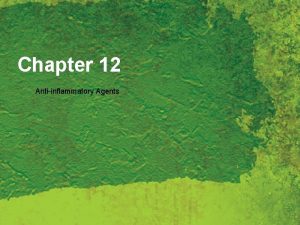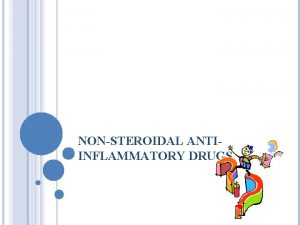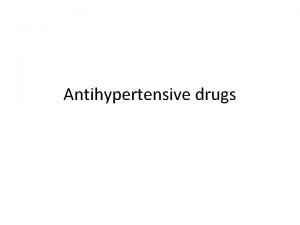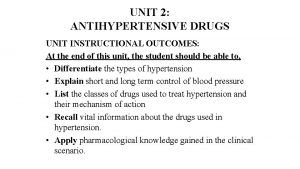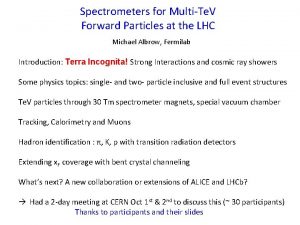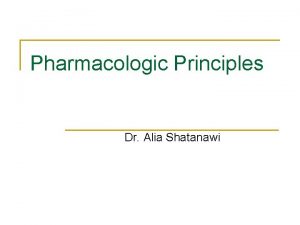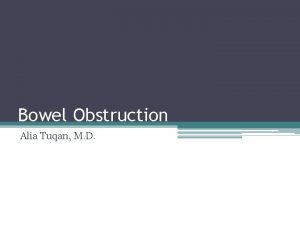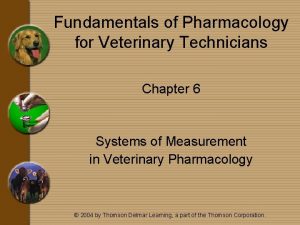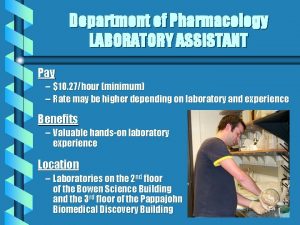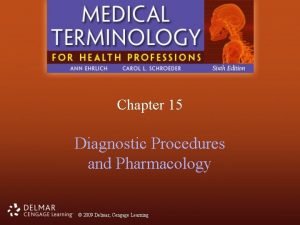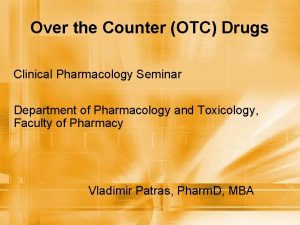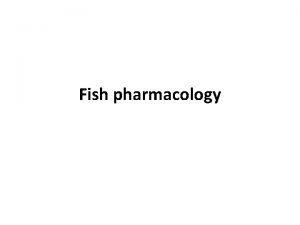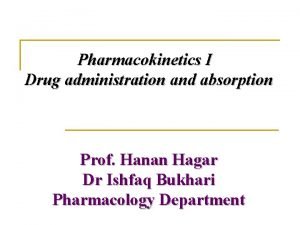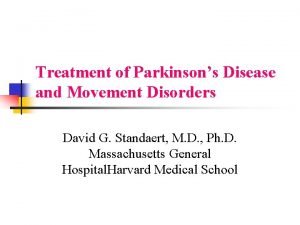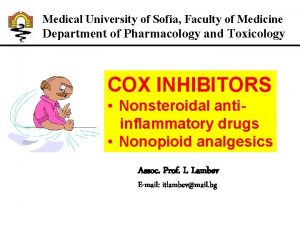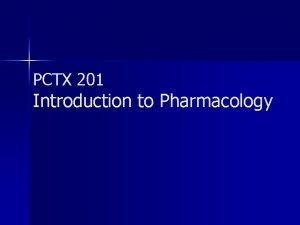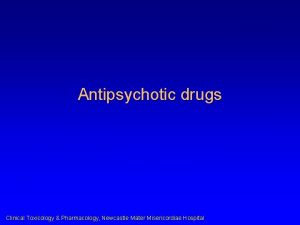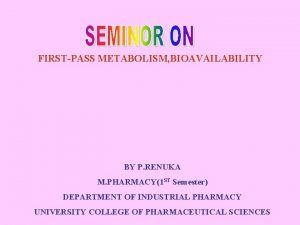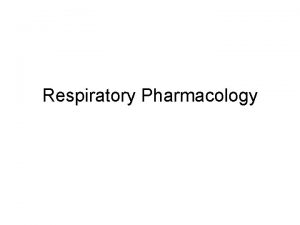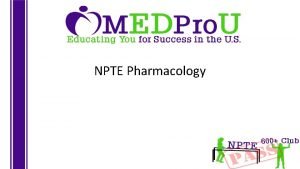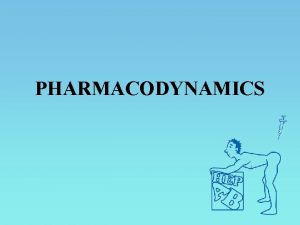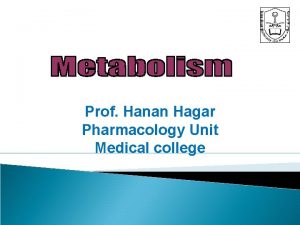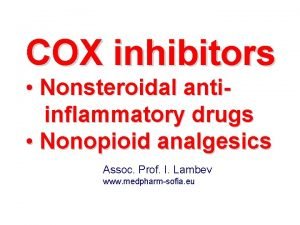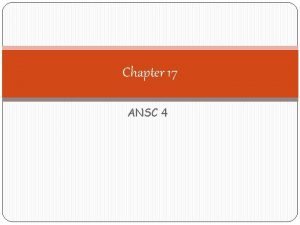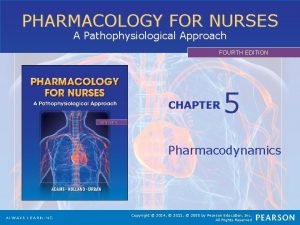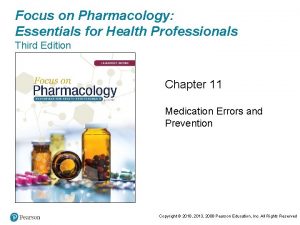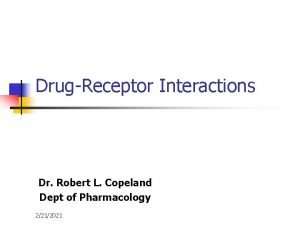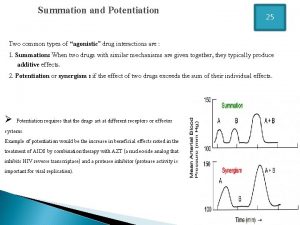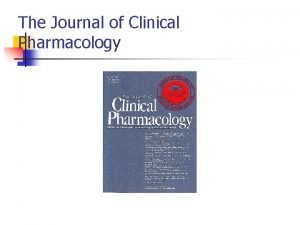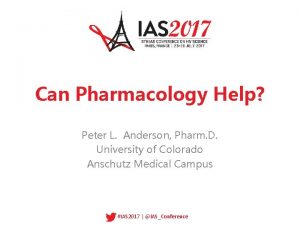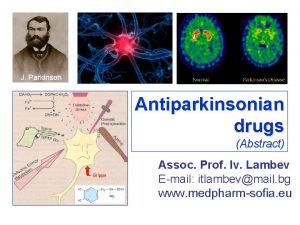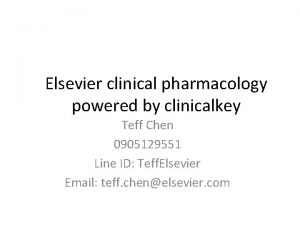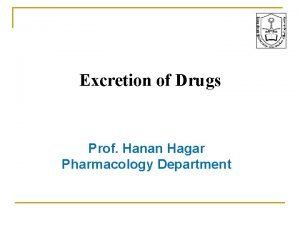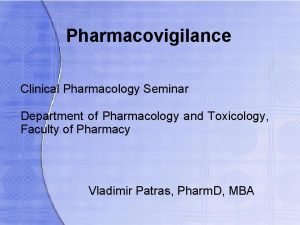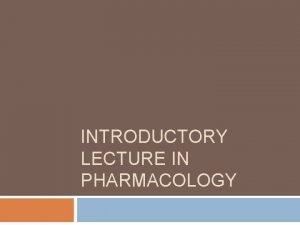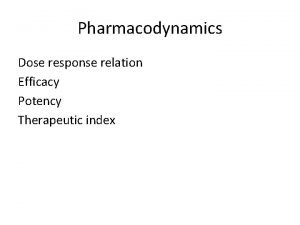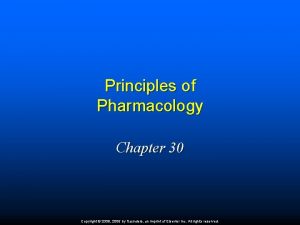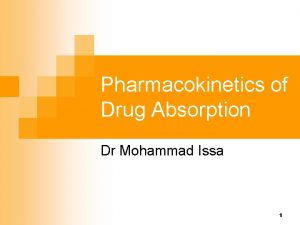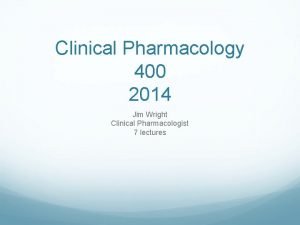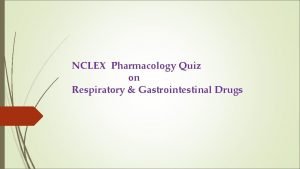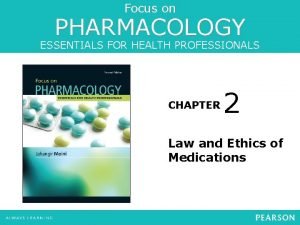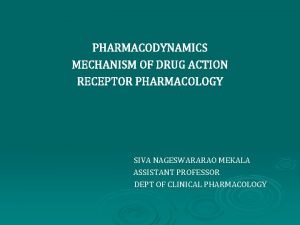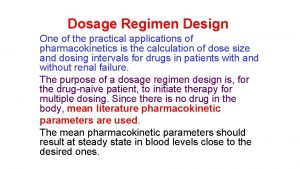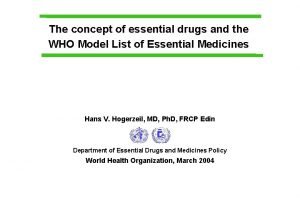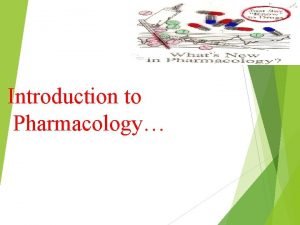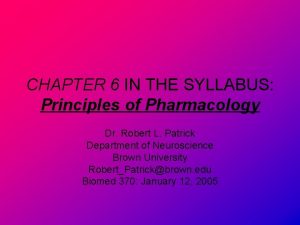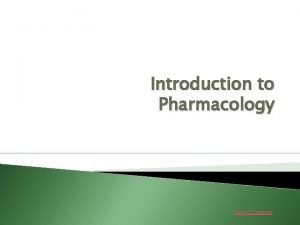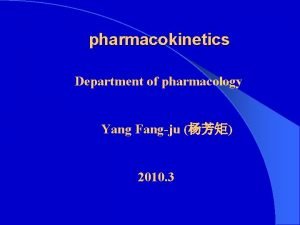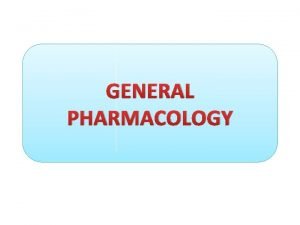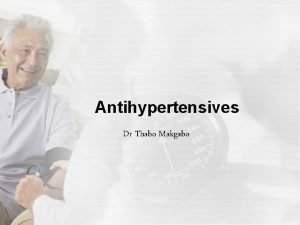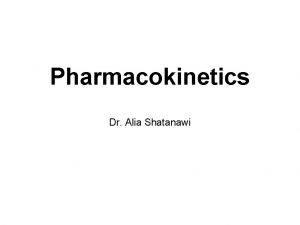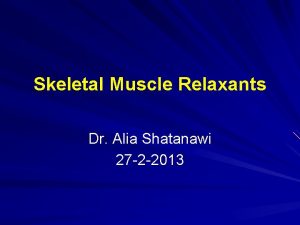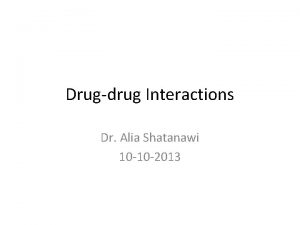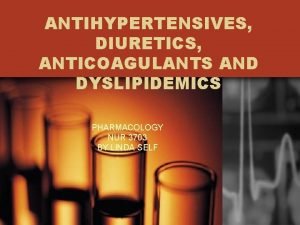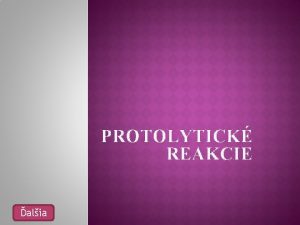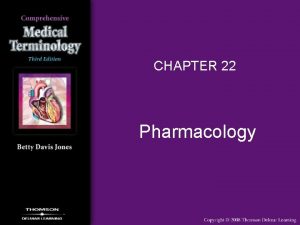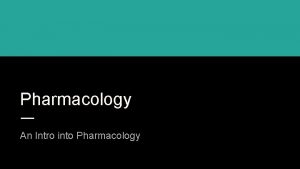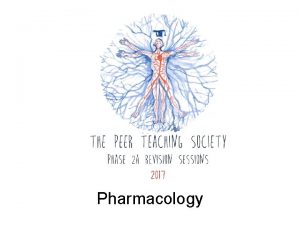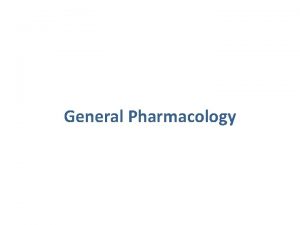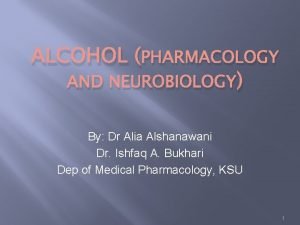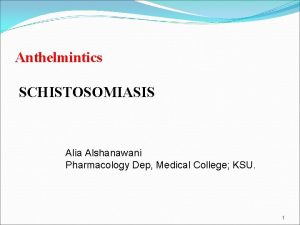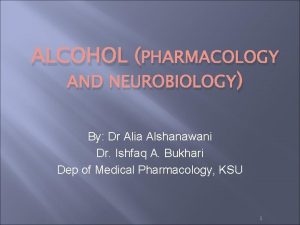Antihypertensives Alia Shatanawi Associate Professor Department of Pharmacology
































































- Slides: 64

Antihypertensives Alia Shatanawi Associate Professor Department of Pharmacology School of Medicine University of Jordan shatanawi 79@gmail. com

Beta-Adrenergic Receptor Blockers β-Adrenoceptor Antagonists ‘β Blockers’

β 1 adrenergic receptor Cardiac effects: ■ Increase cardiac output ■ ■ Increase heart rate Increase heart contractility

History ■ Raymond Ahlquist (MCG) in 1948 was searching for a drug to relieve menstrual cramps and coincidently found epinephrine stimulated heart rate through a distinct set of receptors (β ) in the heart ■ By 1964, a research chemist, Sir James Black, having read these published observations developed β -blockers

Mechanism of Action: Effect on the cardiac myocyte Sympathetic Nerve β-blocker NE Ca++ β 2 β 1 ATP c. AMP PK Ca++ /Ca. M A P MLC (contractile elements) Contraction cardiac myocyte The endogenous pathway • Beta-AR are coupled to Gsproteins • Gs-proteins activate adenylyl cyclase to form c. AMP • Increased c. AMP activates PK-A • PK-A phosphorylates L-type calcium channels and MLC-K, 1. Increase inotropy (contractility). 2. Gs-protein activation also increases heart rate (chronotropy) A Beta blocker will block this pathway to decrease intropy and chronotropy

Mechanism of Action: Effect on the blood vessel The endogenous pathway • Beta-AR are again coupled to α 2 AR VSMC, smooth muscle cell Β 2 -AR Gs-proteins • However, in contrast to heart, increased c. AMP inhibits MLC-K contraction MLCK in VSMC 1. A modest effect (relative to other vasoactive autocoids) (increase vessel tone) causing blood vessel relaxation AT 2 Renin β blocker • A Beta blocker will also block b 1 -AR in the kidney which will decrease B 1 -AR renin production, and (decrease vessel tone) decrease vessel tone

Propranolol (Inderal): Mechanisms of Action ■ ■ Nonselective, competitive antagonist of β 1 and β 2 adrenergic receptors (block binding of NE) Cardioprotective Decreases heart rate ■ Decreases contractile force ■ Decreases cardiac output ■ Delays AV node conduction ■ Neutralize reflex tachycardia induced by vasodilators ■ ■ Reduces central sympathetic nervous system output Small vasoconstrictive effect (Increase PVR) Reduces renin release (β 1) (effective in patients with high renin activity as is common in younger patients having hypertension)

Propranolol: Side-effects ■ Hypotension, AV block, severe bradycardia (negative chronotrope), possibly HF ■ ■ Bronchial constriction/spasm ■ ■ Do not use in asthmathic patients Acute withdrawal syndrome (receptor supersensitivity) in patients, predisposing to myocardial ischemia Increase triglyceride levels and decrease HDL levels Induce glucose intolerance ■ ■ Careful consideration in patients with conduction problems/bradycardia Careful usage in diabetic and obese patients Lipid soluble, cross BBB-Nightmares/depression

Propranolol: Contraindications ■ ■ ■ Bronchial asthma Peripheral vascular disease AV (heart) block

Other β blockers Atenolol (Tenormin) ■ β 1 selective antagonist ■ Administered once daily ■ Less lipid soluble than other β antagonists Metoprolol (Lopressor) ■ Selective inhibitor to β 1 ■ Useful in asthmatic patients Nadolol (Corgard) ■ Non-selective β antagonist ■ Administered once daily

β Blockers: Indications ■ ■ ■ Mild and moderate hypertensives Useful in patients receiving vasodilators to prevent sympathetic reflex tachycardia Also useful in controlling BP in patients with underlying heart disease (congestive HF, ischemia, MI)

Angiotensin Converting Enzyme Inhibitors ‘ACE Inhibitors’

History ■ ■ ■ Workers in the banana plantations of Brazil were known to collapse after being bitten by a specific viper A Brazilian biochemist Maricio Rocho e Silva purified the venom extracts and sent his post-doc with extracts to study their effects in the lab of Sir John Vane (London) By 1970, the lab of Sir John Vane found the effect was on ACE, ultimately leading to the development of ACE inhibitors

Renin-Angiotensin-Aldosterone System (RAAS) Angiotensinogen ACE Inhibitors Inhibit conversion of inactive angiotensin I to angiotensin II which: • reduces vessel tone • reduces Na+ retention via aldosterone • blocks degradation of bradykinin, a vasodilator • Very useful in diabetic patients • Slows progression of renal disease Vasodilation Renin Angiotensin I ACE (inhibitor) Angiotensin II AT 1 Thus RAAS pathway has multiple effects. Vasoconstriction via discrete pathways which are important in blood pressure control, but which act to increase blood pressure Bradykinin Inactive peptide Aldosterone Na+ retention

‘pril’ suffix=ACE-I Enalapril ■ Excretion is primarily renal – dose should be reduced in patients with renal insufficiency Ramipril Peak plasma concentration within 1 hour ■ t 1/2 – 2 -4 hrs Lisinopril ■ Slowly absorbed; plasma t 1/2 – 12 hrs; administered once daily Captopril ■ Sulfhydryl containing moiety causes some taste changes

ACEI: Side-effects ■ ■ ■ Severe hypotension in hypovolemic patients Hyperkalemia Angioedema (0. 1 -0. 5%) ■ ■ ■ rapid swelling of nose, throat, mouth, larynx, lips, or tongue may relate to inhibitory effect bradykinin catalysis Greater risk in African Americans Cough (10 -20%) Skin rash (10%) Taste alterations (6%)

ACE inhibitors: Contraindications ■ ACE Inhibitor ■ ■ Can cause hyperkalemia Hyperkalemia can be exacerbated with potassium sparing diuretic ■ Some studies indicate that ACEI are not effective in lowering BP in the African American population ■ Pregnancy – ACEI suppresses cell proliferation which will impair embryonic development; should not be administered in second or third trimester

Angiotensin I Receptor Blockers (ARB’s) Angiotensinogen Renin Losartan (Cozaar) ■ ■ ■ Decreases TPR Inhibits Aldosterone release Block Na+ reabsorption Angiotensin I Losartan Angiotensin II AT 1 Vasoconstriction Aldosterone Na+ retention

Blocking AT 1 receptor is antihypertensive ATI Prototype antagonist=Losartan ANG II AT 1 receptor AT 2 receptor • Vasoconstriction • Cell Growth and Proliferation • Aldosterone release • Central Sympathetic activation • Sodium and water retention • Vasodilation • Restrains cell growth and proliferation • Mediates NO and PGI 2 release in kidney • Renal sodium excretion • Dilates afferent renal arteriole

Losartan: Side Effects ■ ■ ■ Angioedema ■ Subcutaneous swelling of eyes and lips Not to be administered during pregnacy (first trimester) ■ AT receptors important in embryonic renal development Dizziness

ACEI versus ARB ■ ■ ■ Use ACEI and ARB in hypertensive patients with heart failure, renal disease, and diabetes ACEI costs $0. 11/cap vs. $0. 48 -0. 90/cap for ARB Use ACEI as first choice vs. ARB, unless patients cannot tolerate ACEI (angioedema), then use ARB

Peripheral α 1 Adrenergic Receptor Blockers ‘Peripheral α 1 Blockers’

Prazosin (Minipres): Mechanism of Action ■ ■ ■ Blocks α 1 -AR on resistance vessels from binding NE released from nerve terminals Decreases vascular tone (vasodilates) Thereby decreases PVR and BP

Prazosin: Side effects ■ ■ Postural dizziness (14%) Headaches (8%) Drowsiness (8%) ‘first dose phenomenon’ ■ ■ Syncopal reaction-orthostatic hypotension (upon standing) After first dose, tolerance to this reaction

Other selective α 1 -adrenergic receptor blockers Doxazosin and Terazosin ■ ■ longer t 1/2 than prazosin used for treatment of benign prostate hypertrophy

Recent Recommendations on α blockers ■ ■ ■ α-blockers are less effective than diuretics in preventing cardiovascular events, mainly heart failure (ALLHAT clinical study) NIH recommends NOT to use α -blocker as the first drug of choice in hypertension (it is safe, just not effective in preventing heart failure) A reasonable addition, to facilitate blood pressure control

Adrenergic Neuron-Blocking Agents ‘Sympatholytics’

Adrenergic Neuron-Blocking Agents ■ Deplete norepinephrine from presynaptic, postganglionic sympathetic nerve terminals ■ Inhibit release of norepinephrine in response to sympathetic nerve stimulation ■ Reduce cardiac output and total peripheral resistance

Gaunethidine (Ismelin): Mechanism of action • Guanethidine enters peripheral nerve terminals v same transporter as NE • Depletes NE stores in vesicles • False neurotransmitter

Guanethidine: Pharmacokinetics ■ Effective orally (takes 72 hrs to reach maximum effect) ■ Plasma t 1/2 – approximately 5 days ■ Guanethidine is indicated only for moderate to severe hypertension

Reserpine (Serpasil): Mechanism of Action ■ ■ ■ Blocks transport of dopamine into storage granules in nerve terminals Depletes stores of catecholamines and serotonin in CNS and PNS Decreases sympathetic tone, total peripheral resistance and cardiac output

Reserpine: Pharmacokinetics ■ Absorbed from GI tract (2 -6 wks to achieve maximal effect) ■ Plasma t 1/2 – 11. 5 -16 days ■ Largely hepatic metabolism

Guanethidine and Reserpine: Side Effects ■ ■ ■ ■ Orthostatic hypotension (Guanethidine) Depression Nasal Congestion Bradycardia Impotence (Guanethidine) Diarrhea (Guanethidine) Salt and water retention

Guanethidine and Reserpine: Drug Interactions ■ Drugs that alter function of the amine pump can block uptake to site of action: tricyclic antidepressants, monoamine oxidase inhibitors, ephedrine, amphetamines, phenothiazines ■ After chronic use of guanethidine, the above agents could cause hypertension due to development of receptor supersensitivity

Rarely indicated ■ ■ ■ The a adrenergic blocking agents are not frequently prescribed because of their adverse effects Can be a last resort in refractory (unmanageable) hypertension Reserpine is cost-effective

entral α 2 -Adrenergic Receptor Agonist Centrally Acting Sympathoplegic Drugs ‘Central α 2 Agonists’

Central α 2 -Adrenergic Agonists Vasomotor center VN=ventral nucleus RVLM=rostral ventrolateral medulla ■ ■ Methyldopa and clonidine cross BBB to stimulate α 2 receptors in vasomotor center in brainstem Inhibit sympathetic and increase parasympathetic outflow to periphery Decrease BP At high concentrations, increase BP by stimulating peripheral α 2

Central α 2 -AR Agonists: Mechanism of Action ■ Heart rate, cardiac output, total peripheral resistance, plasma renin activity, and baroreceptor function are reduced. ■ Vascular smooth muscle: α 2 adrenergic receptors located on vascular smooth muscle open Ca 2+ channels and cause vasoconstriction. Not evident clinically unless given intravenously

Central α 2 -AR Agonists ■ Clonidine, (guanabenz and guanfacine): Direct acting α 2 adrenergic receptor agonists. ■ α -methyldopa: Prodrug taken up by central adrenergic neurons and converted to the α 2 adrenergic receptor agonist α methylnorepinephrine.

Clonidine (Catapres): Pharmacokinetics ■ ■ Oral plasma t 1/2 – 12 -16 hrs Transdermal administration of clonidine by patch (replaced once per week) useful in patients unable to take oral medication

Clonidine: Side Effects ■ ■ Dry mouth (44%) Drowsiness (50%) Dizziness (15%) Clonidine can cause sodium retention, but may be used at low doses w/o addition of diuretic

Clonidine: Drug Interactions ■ Tricyclic antidepressants can reverse the antihypertensive effects of clonidine

Methyldopa (Aldomet): Side Effects ■ Like Clonidine, causes sedation, dry mouth, sodium retention, and dizziness ■ With prolonged use, hemolytic anemia is a rare side effect

Clonidine and Methyldopa: Drug interactions ■ ■ ■ Tricyclic antidepressants may prevent the antihypertensive effect Barbiturates may reduce the efficacy of through induction of hepatic microsomal enzymes Monoamine oxidase inhibitors when coadministered may produce hypertension and CNS stimulation

Indications ■ Methyldopa is a first choice for hypertension during pregnancy ■ Clonidine is useful in the diagnosis of pheochromocytoma (adrenal tumor) in hypertensive patients; it will reduce NE to lower then 500 pg/m. L in tumor-free patients

Vasodilators

Vasodilators: Mechanism of Action • Relax Vascular smooth muscle cells • Vasodilate Arterioles • Decrease PVR • Decrease Blood Pressure Hydralazine Minoxidil Smooth Muscle cell + + + K+ Ca 2+ + + contract Contractile elements

Hydralazine (Apresoline): Mechanism of Action Direct vasodilatory action on arterioles altering smooth muscle cell Ca 2+ by hyperpolarizing cell Decreases total peripheral resistance Sympathetic activity (Reflex responses) ■ ■ ■ Increased heart rate Increased heart contractility Increased plasma renin activity

Hydralazine: Pharmacokinetics ■ Plasma t 1/2 – 1 hr, but antihypertensive action of 12 hrs possibly due to storage in arterial wall

Hydralazine: Side-effects ■ Reflex tachycardia ■ ■ ■ Can precipitate MI in elderly patients or patients with coronary artery disease Reflex response can be blocked by addition of propranolol Sodium and water retention – can be prevented by addition of a diuretic Headache, Nausea, Dizziness Lupus syndrome

Minoxidil (Loniten) : Mechanism of Action ■ ■ ■ Activates ATP-sensitive K+ channels to cause hyperpolarization and smooth muscle cell relaxation Arteriolar vasodilation Decrease in total peripheral resistance

Minoxidil: Pharmacokinetics ■ ■ Plasma t 1/2 - 4 hrs, but hypotensive effect for 12 -24 hrs Must be metabolized by the liver to form the active metabolite, minoxidil N-O sulfate

Minoxidil: Side effects ■ Similar to hydralazine ■ Hypertrichosis – accentuated hair growth ■ Minoxidil is reserved for treatment of severe hypertension and must be given with a diuretic and a sympatholytic agent (usually a β -adrenergic receptor antagonist).

Indications ■ Severe, resistant hypertension

Vasodilators in Treatment of Hypertensive Crisis

Vasodilators: Mechanism of Action • Relax Vascular smooth muscle cells • Vasodilate Arterioles • Decrease PVR • Decrease Blood Pressure Hydralazine NE Minoxidil Smooth Muscle cell Labetolol Carvedilol α 1 AR K+ Ca 2+ contract relax Contractile elements NO SNP

Sodium Nitroprusside (SNP, Nipride): Mechanism of Action ■ Liberates nitric oxide which dilates vascular smooth muscle ■ Thereby, decreases total peripheral resistance

SNP: Pharmacokinetics ■ ■ ■ Given by I. V. infusion Is light sensitive and unstable in aqueous solution Antihypertensive effect ceases upon stopping infusion Metabolized to sodium thiocyanate – slowly cleared by kidneys Toxic accumulation of cyanide can lead to lactic acidosis

SNP: Side-effects ■ ■ Rebound hypertension Tolerance

Diazoxide (Hyperstat): Mechanism of Action ■ ■ ■ Dilates arterial smooth muscle through activation of KATP channels Little or no effect on venous smooth muscle Decreases total peripheral resistance

Diazoxide: Pharmacokinetics ■ Administered I. V. ■ Onset of action within 2 min. ■ Duration of action – 6 -24 hrs

Diazoxide: Side-effects ■ ■ Tachycardia Angina

Labetalol (Normodyne) and Carvedilol (Coreg) : Mechanism of Action ■ Mixture of α 1 and non-selective β adrenergic receptor antagonist ■ ■ Block adrenergic receptors in blood vessels and heart Labetolol 1: 3 selectivity α 1 AR: β AR Carvedilol 1: 10 selectivity α 1 AR: β AR Decrease total peripheral resistance w/o reflex tachycardia

Labetalol & Carvedilol: Pharmacokinetics ■ Administered orally or i. v. (for hypertensive crisis) Useful in pheochromocytoma (Labetalol) ■ Plasma t 1/2 – 2 hrs (p. o. ) and 5 hrs (i. v. ) ■
 Alia shatanawi
Alia shatanawi Git
Git Alia shatanawi
Alia shatanawi Alia shatanawi
Alia shatanawi Promotion from assistant to associate professor
Promotion from assistant to associate professor Antihypertensives classification
Antihypertensives classification Antihypertensives
Antihypertensives Alia tuqan
Alia tuqan Alia atlas
Alia atlas Radio idea
Radio idea Multiteh
Multiteh Nur alia file upload
Nur alia file upload Alia drug testing
Alia drug testing Alia
Alia Alia tuqan
Alia tuqan Pharmacology for veterinary technicians
Pharmacology for veterinary technicians Pharmacology pay
Pharmacology pay Chapter 15 diagnostic procedures and pharmacology
Chapter 15 diagnostic procedures and pharmacology Clinical pharmacology seminar
Clinical pharmacology seminar Therapeutic index
Therapeutic index Fish pharmacology
Fish pharmacology First pass effect
First pass effect Pharmacology and venipuncture in radiology pdf
Pharmacology and venipuncture in radiology pdf Dopamine blockers
Dopamine blockers Basic & clinical pharmacology
Basic & clinical pharmacology Pharmacology chapter 1
Pharmacology chapter 1 Pharmacology newcastle
Pharmacology newcastle First pass metabolism definition pharmacology
First pass metabolism definition pharmacology Guaifenasin
Guaifenasin Alpha 1 vs alpha 2 receptors
Alpha 1 vs alpha 2 receptors Tachyphylaxis in pharmacology
Tachyphylaxis in pharmacology Glucouronide
Glucouronide Glomerular
Glomerular Chronic gout
Chronic gout Pharmacology definition
Pharmacology definition Pharmacology for nurses: a pathophysiological approach
Pharmacology for nurses: a pathophysiological approach Focus on pharmacology essentials for health professionals
Focus on pharmacology essentials for health professionals Factors affecting absorption of drug
Factors affecting absorption of drug Pharmacology definition
Pharmacology definition Summation drug interaction
Summation drug interaction Define pharmacology
Define pharmacology Pharmacology tutor anderson
Pharmacology tutor anderson Basic & clinical pharmacology
Basic & clinical pharmacology Clinical pharmacology powered by clinicalkey
Clinical pharmacology powered by clinicalkey What is ion trapping in pharmacology
What is ion trapping in pharmacology Clinical pharmacology seminar
Clinical pharmacology seminar What is pharmacology
What is pharmacology Therapeutic index
Therapeutic index Chapter 30 principles of pharmacology
Chapter 30 principles of pharmacology Difference between absolute and relative bioavailability
Difference between absolute and relative bioavailability Clinical pharmacology residency
Clinical pharmacology residency Toxicology and applied pharmacology
Toxicology and applied pharmacology Respiratory pharmacology quiz
Respiratory pharmacology quiz Focus on pharmacology essentials for health professionals
Focus on pharmacology essentials for health professionals Mechanism of drug action
Mechanism of drug action Loading dose formula
Loading dose formula Zeroth order kinetics
Zeroth order kinetics Concept of essential drugs
Concept of essential drugs Branches of pharmacology
Branches of pharmacology Pharmacology of drugs acting on respiratory system
Pharmacology of drugs acting on respiratory system Basic principles of pharmacology
Basic principles of pharmacology Adrenal drugs pharmacology
Adrenal drugs pharmacology Slidetodoc
Slidetodoc Bioavailability definition
Bioavailability definition Apparent volume of distribution
Apparent volume of distribution
